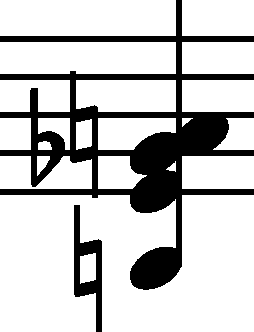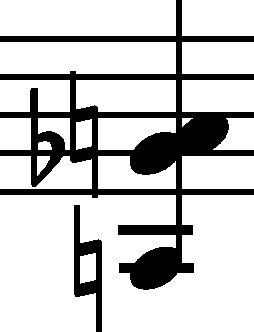



It is unclear how the oversight of the e 1 note in the chord occurred in FE (→EE). There are two possibilities:
1 note in the chord occurred in FE (→EE). There are two possibilities:
-
the note was overlooked, and Chopin, proofreading FE1 and then FE2, did not notice it or accepted this version. As far as FE1 is concerned, taking into account the fact that it includes a serious mistake in this chord – the bottom note is a g instead of a – it seems to be natural to assume that Chopin did not pay attention to this chord when proofreading this edition at all. In turn, a possible acceptance of a version without e
 1 could have happened after he had detected the aforementioned mistake in the proofreading of FE2.
1 could have happened after he had detected the aforementioned mistake in the proofreading of FE2. -
Chopin removed e
 1 while proofreading FE1. Admittedly, it seems to be impossible that he did not notice an erroneous note in the chord he was just proofreading, yet there is a possibility that the mistake was absent at the moment of a possible proofreading. There are situations in which proofreading of one mistake results in emergence of a new one, e.g. in the 1st mov., bar 336 or in the Sonata in B
1 while proofreading FE1. Admittedly, it seems to be impossible that he did not notice an erroneous note in the chord he was just proofreading, yet there is a possibility that the mistake was absent at the moment of a possible proofreading. There are situations in which proofreading of one mistake results in emergence of a new one, e.g. in the 1st mov., bar 336 or in the Sonata in B minor, op. 35, 3rd mov., bar 20. In this case, the bottom note could have been printed without ledger lines (cf. a similar mistake in bar 281), which is indicated by the fact that the note head in FE1 is placed at the correct pitch, but the ledger lines are not, since they are too close to each other. The next phases of formation of FE would be then as follows ([FE0] denotes proof copy):
minor, op. 35, 3rd mov., bar 20. In this case, the bottom note could have been printed without ledger lines (cf. a similar mistake in bar 281), which is indicated by the fact that the note head in FE1 is placed at the correct pitch, but the ledger lines are not, since they are too close to each other. The next phases of formation of FE would be then as follows ([FE0] denotes proof copy):
[FE0] , FE1
, FE1  , FE2
, FE2  .
.
Upon seeing [FE0], Chopin could have removed e 1 and added ledger lines, which, however, were placed at a wrong pitch.
1 and added ledger lines, which, however, were placed at a wrong pitch.
In conclusion, it can be said that the issue of e 1 having been removed by Chopin remains open; however, an unintentional oversight of this note seems to be more likely. Therefore, in the main text we include it in a variant form.
1 having been removed by Chopin remains open; however, an unintentional oversight of this note seems to be more likely. Therefore, in the main text we include it in a variant form.
category imprint: Differences between sources; Corrections & alterations
issues: Authentic corrections of FE
notation: Pitch
Back to note


